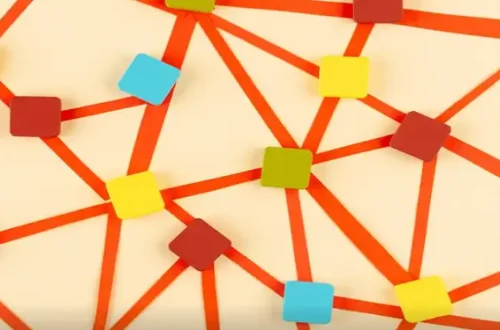NYT Connections is a popular word-based puzzle game available through The New York Times (NYT) suite of online games. It’s designed to challenge players’ linguistic and categorization skills by presenting a set of 16 words. The goal is to group these words into four categories, with each category containing exactly four words that share a common theme. The catch? Each word only fits into one group, and your success depends on discovering these hidden connections.
Given the game’s rising popularity, many players seek practical tips and strategies to improve their performance and enjoy a more fulfilling experience. In this article, we’ll break down the key steps to mastering NYT Connections, offering clear, actionable advice to help you enhance your game.
Understanding the Basics of NYT Connections
Before diving into strategies, let’s first understand the structure and goal of NYT Connections. Here’s how the game works:
- Word List: Each puzzle presents 16 words. These could be anything from animals to historical figures to scientific terms. The challenge lies in figuring out how to categorize these words.
- Category Grouping: Your task is to divide the 16 words into four groups of four, with each group sharing a common theme. This requires recognizing relationships such as synonyms, antonyms, geographical locations, or other thematic connections.
- Time Limit: Although NYT Connections doesn’t necessarily operate on a strict time limit, the puzzle’s difficulty increases over time. Thus, you’ll want to solve the puzzle within a reasonable timeframe to sharpen your skills.
- Points System: The more efficiently you categorize the words, the higher your score. Additionally, making fewer mistakes adds to your overall performance.
Practical Steps to Solve NYT Connections
Now that you’re familiar with the basics, let’s get into the practical steps to help you solve NYT Connections more effectively.
1. Start by Scanning for Obvious Categories
When presented with the list of 16 words, don’t immediately jump into grouping. First, take a moment to scan the list for any obvious categories. These are often groups of words that immediately suggest a shared theme, such as animals, colors, or countries. By identifying these obvious categories first, you can immediately knock off a few words and reduce the complexity of the puzzle.
2. Identify Word Relationships and Clusters
After you’ve separated the more obvious groups, look for subtler connections between words. Think about word meanings, synonyms, antonyms, and even phonetic or visual similarities. Words that have a similar meaning or function can often be grouped together. For example, you might encounter words like “dog,” “cat,” “lion,” and “elephant,” all of which belong in the animal category.
Other types of connections might be based on geography (e.g., countries or cities), professions (e.g., different types of jobs), or even pop culture references. Focus on associations that feel most natural to you.
3. Use Process of Elimination
Sometimes, the words don’t immediately suggest an obvious category. In these cases, it’s helpful to use a process of elimination. By sorting out words that belong in clear categories first, you can reduce the number of options for the remaining words. This allows you to narrow down potential groupings and identify where words might belong based on their shared attributes.
4. Consider the Puzzle’s Theme and Word Pairings
Many NYT Connections puzzles feature words that can be paired together based on an overarching theme. For example, a puzzle could involve words related to a particular era in history, scientific terms, or famous personalities. Try to think of how certain words might belong to a shared concept that transcends individual categories.
Paying attention to common word pairings or familiar references can be particularly helpful. For example, if you encounter words related to famous artists like “Van Gogh,” “Picasso,” and “Dali,” they could be grouped together under the category of “artists.”
5. Don’t Be Afraid to Make Mistakes
One of the most important aspects of NYT Connections is the trial-and-error process. Don’t be afraid to make mistakes. Each time you try a grouping, whether it’s right or wrong, you learn something new that can guide your next decision.
If you make a wrong move, the game typically offers feedback, such as highlighting incorrect groupings or providing a hint. Use this feedback to adjust your approach and refine your categorizations.
6. Reassess and Revise Your Groupings
Once you’ve made some initial progress, step back and reassess your word groups. You might find that certain words could belong in different categories than you originally thought. Reevaluate your groups and see if there’s room for improvement.
If you’re stuck, try temporarily switching around a few words in different categories. Sometimes, the solution lies in considering words from different angles or perspectives.
Advanced Strategies to Master NYT Connections
Once you’ve become comfortable with the basics, consider implementing these more advanced strategies to elevate your game.
1. Study Word Patterns Across Puzzles
As with many word-based games, familiarity breeds efficiency. Spend some time reviewing past NYT Connections puzzles to spot patterns in how words are grouped. Over time, you’ll recognize common themes and categories, such as types of fruit, modes of transportation, or famous historical events.
The more you play, the quicker you’ll be able to spot these patterns and identify word relationships without needing to overthink.
2. Collaborate with Friends
If you find yourself consistently stumped, collaborating with friends or joining online communities can be a great way to improve your skills. Sharing different perspectives can open your eyes to possible connections you might have missed. These collaborative sessions can be both fun and educational as you work together to solve the puzzle.
3. Use External Resources
If you’re really stuck on a particular puzzle, don’t hesitate to use external resources like online thesauruses, word lists, or even topic-based search engines to help you identify potential categories. While it’s important to rely on your own problem-solving skills, using references in challenging situations can speed up the learning process and enhance your overall performance.
4. Practice Daily
As with any skill, consistent practice is the key to improvement. Set aside time each day to play NYT Connections and test your word categorization skills. With regular practice, you’ll develop sharper instincts for spotting connections and grouping words more efficiently.
Benefits of Playing NYT Connections
Playing NYT Connections regularly offers several benefits that go beyond just improving your vocabulary or word categorization skills:
- Enhanced Cognitive Function: The puzzle encourages critical thinking, problem-solving, and pattern recognition, which can improve overall cognitive abilities.
- Increased Vocabulary: Exposure to a diverse range of words broadens your vocabulary, which can be beneficial in other contexts, like writing or communication.
- Stress Relief: Many players find that NYT Connections offers a satisfying mental challenge that can serve as a healthy distraction from daily stressors.
Conclusion: Embrace the Challenge of NYT Connections
NYT Connections is more than just a fun game—it’s a rewarding exercise in pattern recognition, critical thinking, and word mastery. By applying the practical steps outlined in this guide, you’ll be able to approach the game with greater confidence, refine your problem-solving strategies, and enjoy the puzzles even more.
Remember, practice makes perfect, and over time you’ll find that you become more adept at recognizing word relationships and identifying categories. Whether you’re playing for fun or aiming to achieve high scores, NYT Connections is a great way to challenge your brain and engage with words in a meaningful, enjoyable way.





